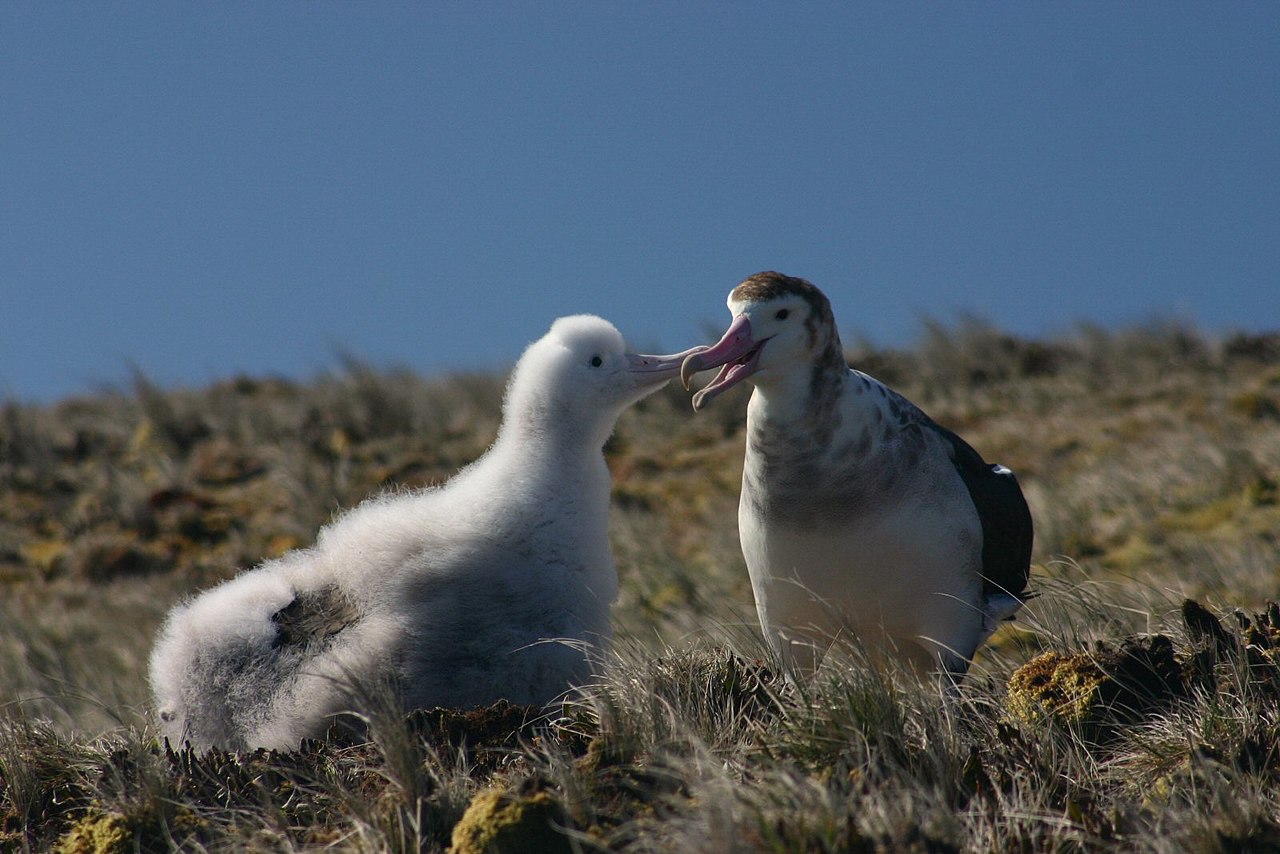When an epidemic of smallpox came to the English village of Yetminster in 1774, Benjamin Jesty vaccinated his family with cowpox, and later Peter Plett repeated this experiment. The first known vaccines were developed in 1796, when Edward Jenner after finding a case of cowpox in a dairy maid collected matter from her pustules and inoculated an 8-year-old boy. In the 1870-80s, Louis Pasteur developed the first vaccines for anthrax and rabies.

Autogenous vaccine (prepared from the bacteria harbored by the patient) was first introduced by Sir Almroth Edward Wright in 1903. In the following years, several case reports were published regarding the preparation and indications of autogenous vaccines. This article is dedicated to veterinary autogenous vaccines used to treat various animal infections.
Important role of veterinary autogenous vaccines
Today, autogenous vaccines play a much more important role than simply “filling the gap” where there are no commercial products currently available. They play a vital role in preventative health management programs, allowing veterinarians to stay close to the farm, better understand the existing disease status and as a result reduce the need for emergency treatments. This is particularly vital to ensure that antibiotics remain effective and available for use when they are needed to safeguard the lives of people and animals.
Autogenous vaccines can also be used to fight against multi-drug resistant bacteria. Finally, they can help support public health programs, for example by helping to control food-borne pathogens such as Salmonella and Escherichia coli by preventing these infections in poultry and pigs [1].
Wide use of autogenous vaccines
- Today, autogenous vaccines are used in livestock farms around the world
These vaccines are used for the specific prophylaxis of various avian diseases – ornithobacteriosis, avian infectious rhinitis, pasteurellosis, ducks’ riemerellosis, turkey bordetellosis, salmonellosis, staphylococcosis, enterococcal infection. Such vaccines are also effective for the prevention of swine diseases – actinobacillus pleuropneumonia, hemophilous polyserositis, pasteurellosis, streptococcosis, staphylococcosis [2].
With the help of autogenous vaccines, it is possible to prevent diseases in cattle – pasteurellosis, neonatal enteritis, mastitis. It is possible to use vaccines for the prevention of such fish diseases as, for example, furunculosis and enteric redmouth disease [2].
- Autogenous vaccines can be prepared for pets when treatments fail to provide desired results
Diarrhoea caused by haemolytic Escherichia coli affects individual animals as well as dogs and cats of all ages in kennels and animal shelters. Vaccination causes increased production of secretory antibodies (IgA) in the gut. Thus, anchorage of bacteria and absorption of antigens (toxins) is inhibited. Staphylococcal pyodermatitis is the main field of application of autogenous vaccines in dogs.
These vaccines can be applied in chronic-recurrent infections of ears, nose and throat, for example, otitis of dogs or chronic rhinitis of cats, which are resistant to therapy with antibiotics. Viral papillomatosis can be treated with autogenous vaccines. Direct transmission of Microsporum canis to humans from dogs and cats does occur. Vaccination is recommended as an accompanying measure to standard therapy [3].
- Autogenous vaccines can be in demand for the preservation of rare species of animals and birds
 Global change is contributing to unprecedented expansions of infectious diseases in wildlife. For example, recurrent avian cholera outbreaks are causing dramatic chick mortality and population decline in endangered albatross colonies on Amsterdam Island, a critical seabird breeding ground in the Southern Indian Ocean. Authors of the article-report «Vaccination protects endangered albatross chicks against avian cholera» identify a way of promoting resistance of endangered albatross populations to a major infectious threat.
Global change is contributing to unprecedented expansions of infectious diseases in wildlife. For example, recurrent avian cholera outbreaks are causing dramatic chick mortality and population decline in endangered albatross colonies on Amsterdam Island, a critical seabird breeding ground in the Southern Indian Ocean. Authors of the article-report «Vaccination protects endangered albatross chicks against avian cholera» identify a way of promoting resistance of endangered albatross populations to a major infectious threat.
Vaccine production was inspired from a process initially developed for the poultry industry. A killed vaccine has been manufactured using a Pasteurella multocida strain isolated from a dead albatross in the field. This same bacterial strain was used to establish a serological assay allowing the monitoring of antibody levels following bird vaccination. Using this vaccine on chicks 2 weeks post-hatching caused 100% seroconversion and reduced the death risk by a factor exceeding 2.5, raising fledging probability from 14% to 46%. These results suggest that using a specifically tailored vaccine could be a key tool to effectively protect endangered seabirds from disease outbreaks threatening them with extinction.
This tool should be of interest to governments, non-governmental organizations, and other sustainable development policy actors (such as the international Commission for the Conservation of Antarctic Marine Living Resources) involved in the conservation of wildlife threatened by emerging infectious diseases [4].
Global autogenous vaccines market
Persistence Market Research company (PMR) estimates that the global autogenous vaccines market was valued at over USD 400 million in 2018, and is expected to witness a CAGR of 4.4% in 2019-2029 [5, 6].
“Unavailability of licensed vaccines for bacterial and viral infections in animals has directed the focus of several small & large manufactures to invest in the manufacturing of autogenous vaccines, thereby propelling the growth of the autogenous vaccines market,” said a PMR analyst.
Key players operating in the autogenous vaccines market across the globe include Boehringer Ingelheim Animal Health, Elanco Animal Health, Ceva Sante Animale (Ceva), Phibro Animal Health, and Dyntec, among others.
Autogenous vaccine manufacturers are focusing on product portfolio expansion through partnerships with and acquisition of small veterinary biologics manufactures, in particular:
- in 2017, Pharmgate and Cambridge Technologies entered into a strategic alliance to provide commercial, autogenous, and prescription vaccine solutions to veterinarians;
- in 2018, Huvepharma acquired AgriLabs, to expand its presence in the US and speed up the commercialization of biologic products for animal health; the acquisition included AgriLabs’s custom vaccines business;
- in 2019, Ceva completed the acquisition of IDT Biologika’s veterinary biopharmaceutical and R&D activities.
Moreover, manufacturers are focusing on expansion and advancement of their production facilities and research centers to produce custom vaccines. For instance, in May 2017, Elanco Animal Health opened a new manufacturing facility for the manufacture of autogenous poultry vaccines in Winslow, Maine [5, 6].
A new GMP plant built by Ceva Biovac and dedicated to autogenous vaccines is planned to deliver its first batches in April 2021.
EMAV news
In the second year of its presence, the Association of European Manufacturers of Autogenous Vaccines and Sera (EMAV) already has 21 members located in 12 European countries.
In several Workshop discussions EMAV members developed key elements of future manufacturing standards for autogenous vaccines – in execution of regulation (EU) 2019/6 of the European Parliament and of the Council. These findings were implemented in a draft of dedicated GMP rules for autogenous vaccines by the EMAV Scientific Working Group, an expert team from the EMAV membership experienced in regulatory procedures, quality assurance and manufacturing of vaccines [7, 8].
From the 14th until the 16th of September, 2021 at Ludwig-Maximilians-University Munich (Germany), the International Alliance for Biological Standardization Europe (IABS-EU) and EMAV are organizing the Autogenous Vaccines Meeting: “Quality of Production and Movement in a Common Market”.
The existing licensing procedures within the EU are demanding concerning the scientific requirements, the length, costs and complexity of procedures. Therefore, vaccines manufacturers tend to focus on the licensing and manufacture of products that have defined development pathways, demonstrated veterinary need, and reasonable expectations for a return on investment. As a consequence, the market for autogenous vaccines to meet “niche” customer needs increased despite a minimally-regulated situation, especially in terms of manufacturing quality. Herewith:
- there is no mutual recognition of GMP or GMP-like certificates;
- there are no harmonized provisions concerning the manufacture and control of autogenous vaccines, not to mention the non-communication and non-information of authorities concerning the movement of vaccines and vaccinated animals within the EU and beyond.
First attempt to harmonize some requirements was the CMDv paper on this item and now the revision of the vet legislation in the EU. The meeting is intended to initiate productive conversations with manufacturers, competent authorities and users to develop a draft proposal how to form a common market which will improve overall disease control in the Community. Key items will be: GMP/GMP-like requirements, mutual recognition of inspections, import and export of autogenous vaccines, relevance and impact on diagnostics and the information on vaccinated animals whenever they are moved to allow an epidemiological surveillance [9].
Autogenous vaccines in Russia – explanation of the competent authorities
The difficulties and prospects for autogenous vaccines in Russia have already been discussed.
The article “Right in a chain: is it possible to use autogenous vaccines in Russia” presents explanations given by representatives of the Russian competent authorities to the federal branch newspaper “Veterinary Medicine and life” (ViZh).
In Russia, the use of autogenous vaccines is still prohibited. Firstly, the very concept of “autogenous vaccine” is not fixed, explained to “ViZh” in the All-Russian State Center for Quality and Standardization of Veterinary Drugs and Feed” (FSBI “VGNKI” of Rosselkhoznadzor). The procedure for registration the manufacturing and use of this type of medicines is not legally prescribed. A uniform vaccine registration procedure, which lasts up to seven months, is not suitable for autogenous vaccines which must be registered a maximum of two months in advance.
To allow the use of autogenous vaccines, it is necessary to amend the Federal Law “On circulation of medicines” in terms of veterinary use, explained Anna Babushkina, the deputy head of the section for internal veterinary supervision of Rosselkhoznadzor, to “ViZh”. This can take at least two years. Due to the fact that each batch of autogenous vaccines is made only for a specific farm, it may be worth revising the state registration mechanism. “The issue requires discussion. It may be worth giving autogenous vaccines a special status to simplify the registration process,” she said [10].
Dialogue with an expert

Eric Thibault, Director for Clinical R&D and customer relations of Ceva Biovac site answered several of my questions about autogenous vaccines.
Eric, as far as I know, you have been taking part in a study alongside other scientists with the aim of protecting the albatross on Amsterdam Island. Could this tool be applied to the conservation of other rare species suffering high levels of bacterial disease mortality?
- Absolutely, Konstantin, autogenous vaccines are a useful tool to prevent endangered species exposed to diseases. As these vaccines are customized, they are produced to match perfectly with each specific need of a species, according to the disease. Such projects are also amazing scientific and human experiences involving microbiologists, immunologists, ecologists and veterinarians. For instance, a minimum handling of the birds is required, as they are protected by law; but their life expectancy is around 80 years, with an immune system inducing high protective response to a vaccination. Consequently, we developed a vaccine specifically formulated to be administered with a single shot able to induce a strong and lasting protection.
In 2020, Ceva company has increased three-fold its production capacity for bacterial autogenous vaccines at its Ceva Biovac site. This tailored manufacturing offers flexibility in terms of batch sizes (1 to 200 L) and a production capacity of 300 batches per week. Could you tell me, please, is this production capacity a lot or a little in the scale of the total autogenous vaccines manufacturing in France?
- Ceva Biovac already delivers vaccines in 15 European countries. The goal of this facility is not only to cover the needs of the French market but also those of other countries requiring high quality products. GMP is the highest quality standard of manufacturing proposed for medicinal products.
Let’s suppose that someday Russia decides to introduce the world experience of using such medicinal products into its practice. What do you think is needed to implement such an ambitious project as the organization of the autogenous vaccines manufacturing “from scratch”?
- The prerequisite is to have a network of diagnostic labs experienced in the isolation and characterization of pathogens and able to ensure the traceability of isolates. Then, to define which standard of manufacturing is adapted to the country and implement the corresponding regulation. Finally train the field vets, as they are at the beginning -sampling- and the end -choice of the posology, route of administration and vaccination program- of the process. Indeed, the manufacturing itself is only a part of the success.
Last year, the company has already explained Russian readers a little about its experience in the field of autogenous vaccines (RU): https://www.tsenovik.ru/articles/veterinariya/autogennye-vaktsiny-dlya-veterinarnogo-primeneniya-opyt-ceva/. Is there a desire to continue sharing its knowledge in this area with representatives of Russian competent authorities, specialized institutes and pharmaceutical communities?
- Yes of course! We’ll be happy to do it, mainly such sharing and partnership gives us the opportunity to offer our solutions to the Russian manufacturers.
The use of veterinary autogenous vaccines can prevent infectious diseases in various species of animals, as well as reduce the need for the use of antimicrobial medicinal products. Harmonization of manufacturing standards for these vaccines is a challenge and an expectation for the EU countries. The issue of using autogenous vaccines in Russia is still controversial but it is constantly growing interest.
The Commission for the Conservation of Antarctic Marine Living Resources (CCAMLR) is an international commission that, based on the best available scientific information, agrees a set of conservation measures that determine the use of marine living resources in the Antarctic
The Association of European Manufacturers of Autogenous Vaccines and Sera (EMAV) is an association that combines the interests of manufacturers of specific vaccines and sera for farm, companion and exotic animals, to promote the European harmonization process
The International Alliance for Biological Standardization for Europe (IABS-EU) was created to support the mission and projects of the International Alliance for Biological Standardization, to enhance its image and to develop its outreach within the EU. IABS-EU contributes to scientific and medical advancement of biologicals by facilitating communication among those who develop, produce and regulate biological products for human and animal health
Ссылки:
- Together Beyond Animal Health / Healthy Animals / Today’s vaccines are as critical to both human and animal health as they were in 1796. URL: https://www.togetherbeyondanimalhealth.com/todays-vaccines-are-as-critical-to-both-human-and-animal-health-as-they-were-in-1796/ (дата обращения 20.02.2021)
- Ветеринария и жизнь / Инфографика ВиЖ / Какие заболевания предотвращают аутогенные вакцины. URL: https://vetandlife.ru/vizh/rynki/kakie-zabolevaniya-predotvrashchayut-autogennye-vakciny/ (дата обращения 20.02.2021)
- BS-Immun GmbH / Production / Dogs/Cats. URL: http://www.bsimmun.at/production/dogscats/?lang=en (дата обращения 20.02.2021)
- HAL / Vincent Bourret, Amandine Gamble, Jérémy Tornos, Audrey Jaeger, Karine Delord, Christophe Barbraud, Pablo Tortosa, Sarah Kada, Jean-Baptiste Thiebot, Eric Thibault, et al. Vaccination protects endangered albatross chicks against avian cholera. Conservation Letters, Wiley, 2018, 10.1111/conl.12443. hal-01702929f. URL: https://hal.archives-ouvertes.fr/hal-01702929/document (дата обращения 02.2021)
- Persistence Market Research / Media Release / Autogenous Vaccines Market / Autogenous Vaccines Market to Grow 1.5X by 2029; Impetus on Back of Rapid Adoption in Livestock Industry. URL: https://www.persistencemarketresearch.com/mediarelease/autogenous-vaccines-market.asp (дата обращения 20.02.2021)
- Persistence Market Research / Market Research / Autogenous Vaccines Market Segmented By Autogenous Biologics, Veterinary/Animal Vaccines, Autogenous Vaccine Regulations, Swine Vaccines. URL: https://www.persistencemarketresearch.com/market-research/autogenous-vaccines-market.asp (дата обращения 20.02.2021)
- EMAV / News / EMAV welcome new members from Greece and Ireland. URL: https://www.emav.be/n147-emav-welcome-new-members-from-greece-and-ireland-en (дата обращения 20.02.2021)
- EMAV / News / New expert team appointed by EMAV Board. URL: https://www.emav.be/n148-new-expert-team-appointed-by-emav-board-en (дата обращения 20.02.2021)
- IABS EUROPE / Conferences / Upcoming conferences / Autogenous Vaccines: Quality of production and movement in a common market. URL: https://autogenous-vaccines-munich-2021.iabs.org/index.php (дата обращения 20.02.2021)
- Ветеринария и жизнь / Новости / Точно в цепь: возможно ли в России применение аутогенных вакцин. URL: https://www.vetandlife.ru/vizh/sobytiya/tochno-v-cep-vozmozhno-li-v-rossii-primenenie-autogennyh-vakcin/ (дата обращения 02.2021)
- Ceva-Russia / News & Media / Press releases / Ceva builds on its preventative health strategy with opening of a new European reference for the manufacture of autogenous vaccines. URL: https://www.ceva.com/en/News-Media/Press-releases/Ceva-builds-on-its-preventative-health-strategy-with-opening-of-a-new-European-reference-for-the-manufacture-of-autogenous-vaccines (дата обращения 20.02.2021)
